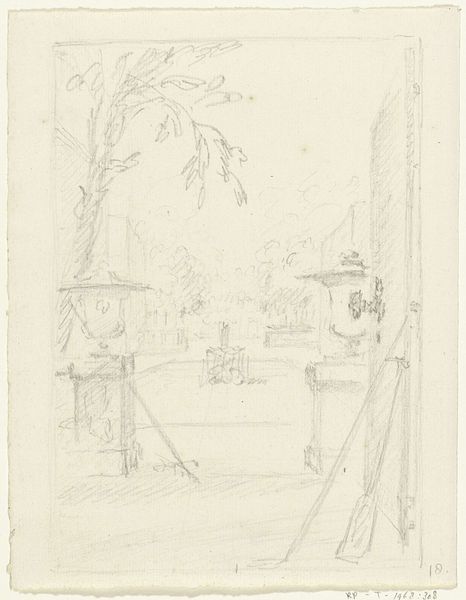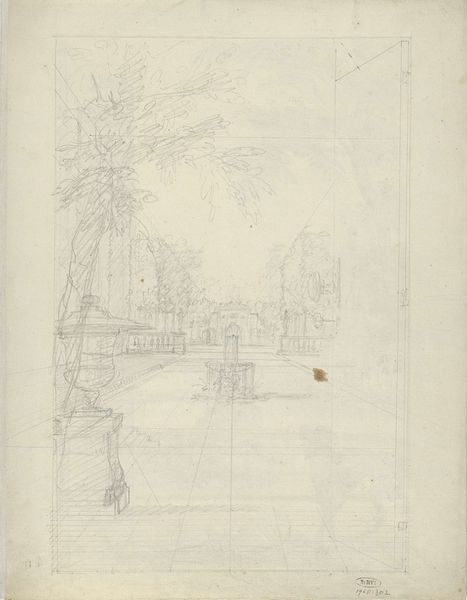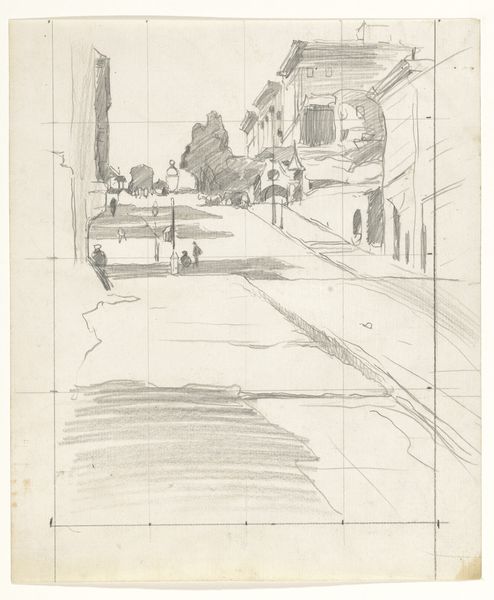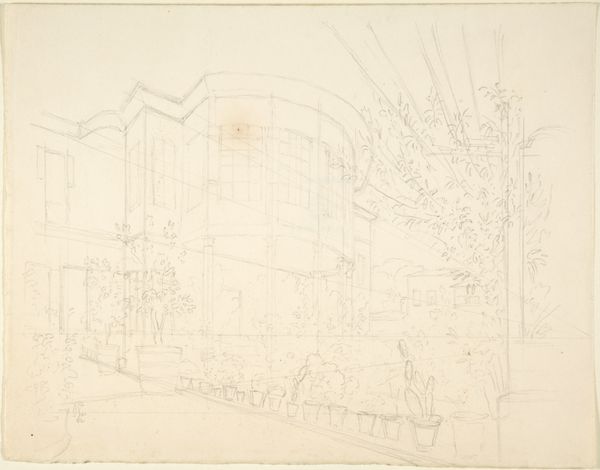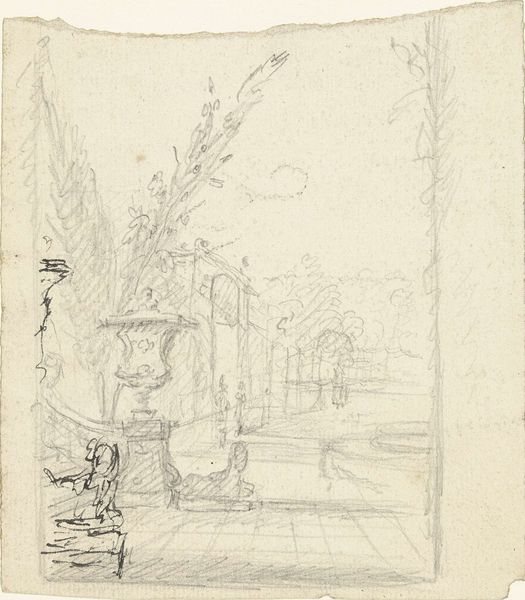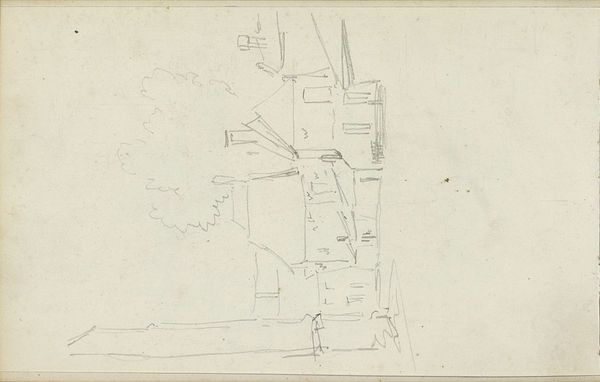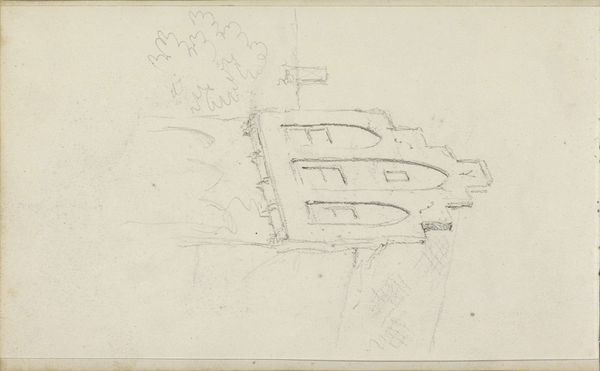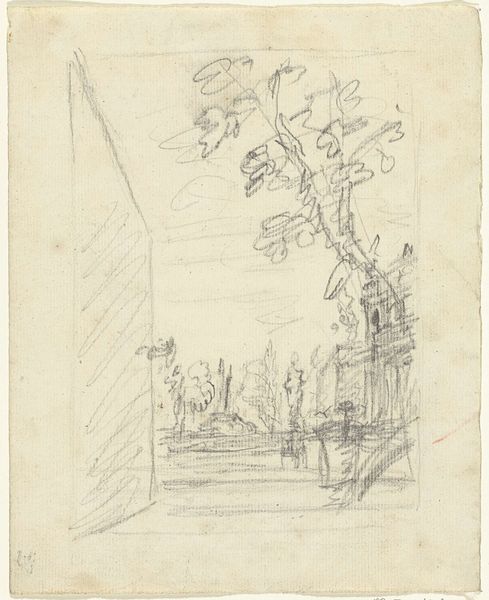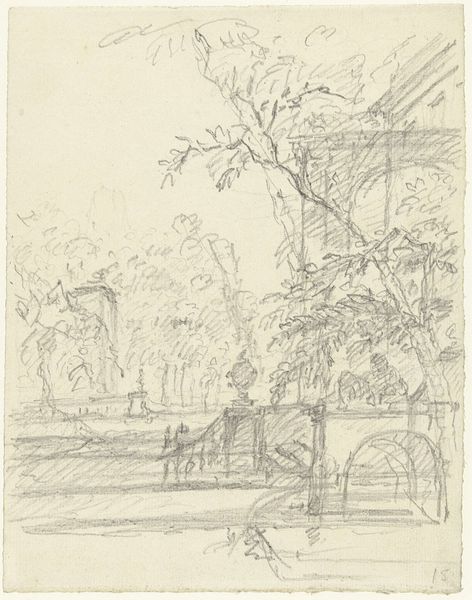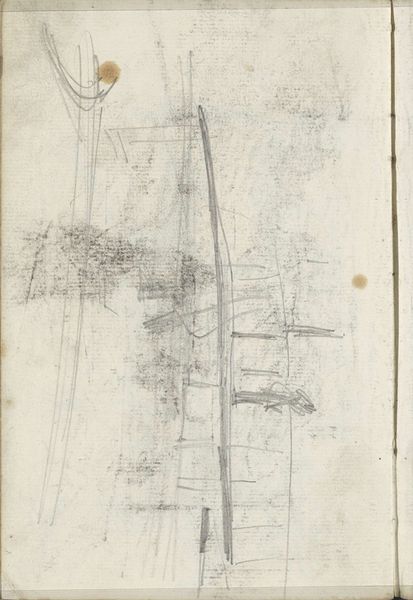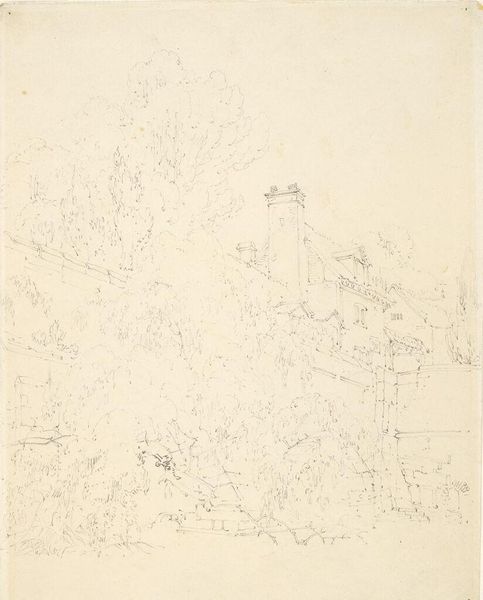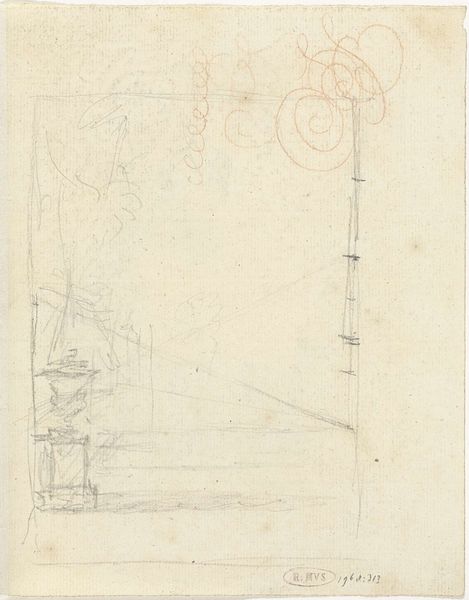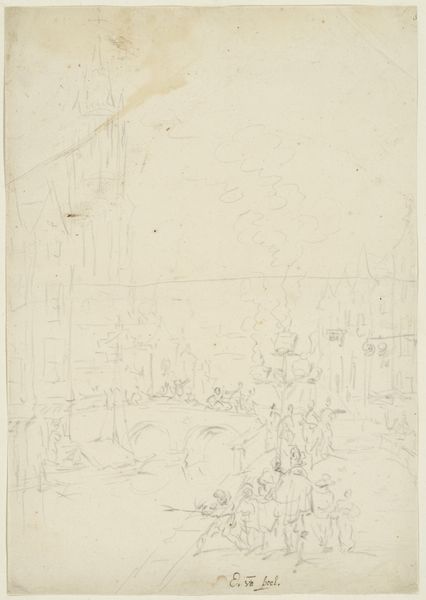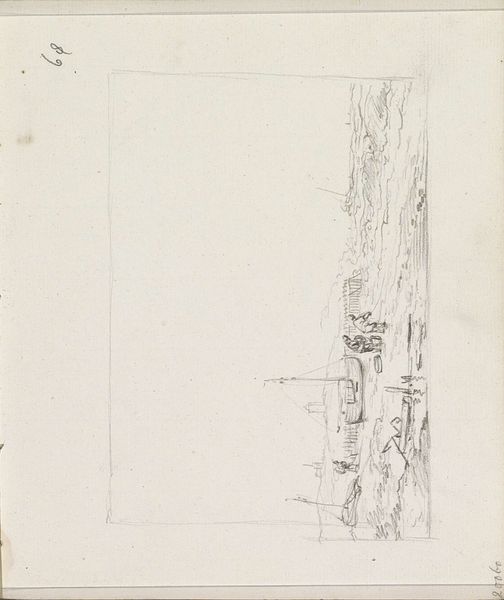
Gezicht in een tuin met een vijver en op de voorgrond een openstaande deur 1715 - 1798
0:00
0:00
drawing, pencil
#
drawing
#
landscape
#
perspective
#
pencil
#
northern-renaissance
Dimensions: height 205 mm, width 328 mm
Copyright: Rijks Museum: Open Domain
Curator: I find this pencil drawing rather charming. Created sometime between 1715 and 1798 by Dionys van Nijmegen, it’s titled “View in a Garden with a Pond and an Open Door in the Foreground." Editor: Immediately, I'm struck by how it invites the gaze, beckoning the viewer into the scene. There’s almost a theatrical quality, the doorway serving as a proscenium arch. Curator: Yes, and that open doorway – a classic symbol of opportunity or a passage to another realm, isn't it? Van Nijmegen clearly wants us to contemplate what lies beyond, quite literally reframing our perception of space. Editor: I read it more critically, to be frank. Consider the period. Gardens were highly manicured status symbols of the aristocracy. Does the ‘invitation’ reinforce exclusion by showcasing inaccessible private space? Curator: That's an interesting point, it adds complexity, particularly when we consider how carefully the perspective is rendered. The artist even added notes specifying precise distances. He seemed very interested in perspective's symbolic and actual power. Editor: Power that stems from its representational accuracy and that accurately represented class structure in that historical moment. Those details could be measurements for a structure, potentially reinforcing who gets to survey and who is surveyed. Curator: Well, yes, that's fair. Still, you cannot deny the drawing’s appeal—a blend of precise structure with the softness of natural elements, creating a contemplative, visually balanced harmony. Editor: Agreed, it's more than just an image of control. But for me, its value resides precisely in understanding its dual function as a tool for creating both visual harmony and power imbalances. Curator: An interesting contrast—to reflect both its aesthetic draw and historical position, it does challenge one's perspectives. Thank you for giving me some food for thought! Editor: Absolutely! Context shifts our view, illuminating its layers of complexity and its resonating social meaning across eras.
Comments
No comments
Be the first to comment and join the conversation on the ultimate creative platform.
